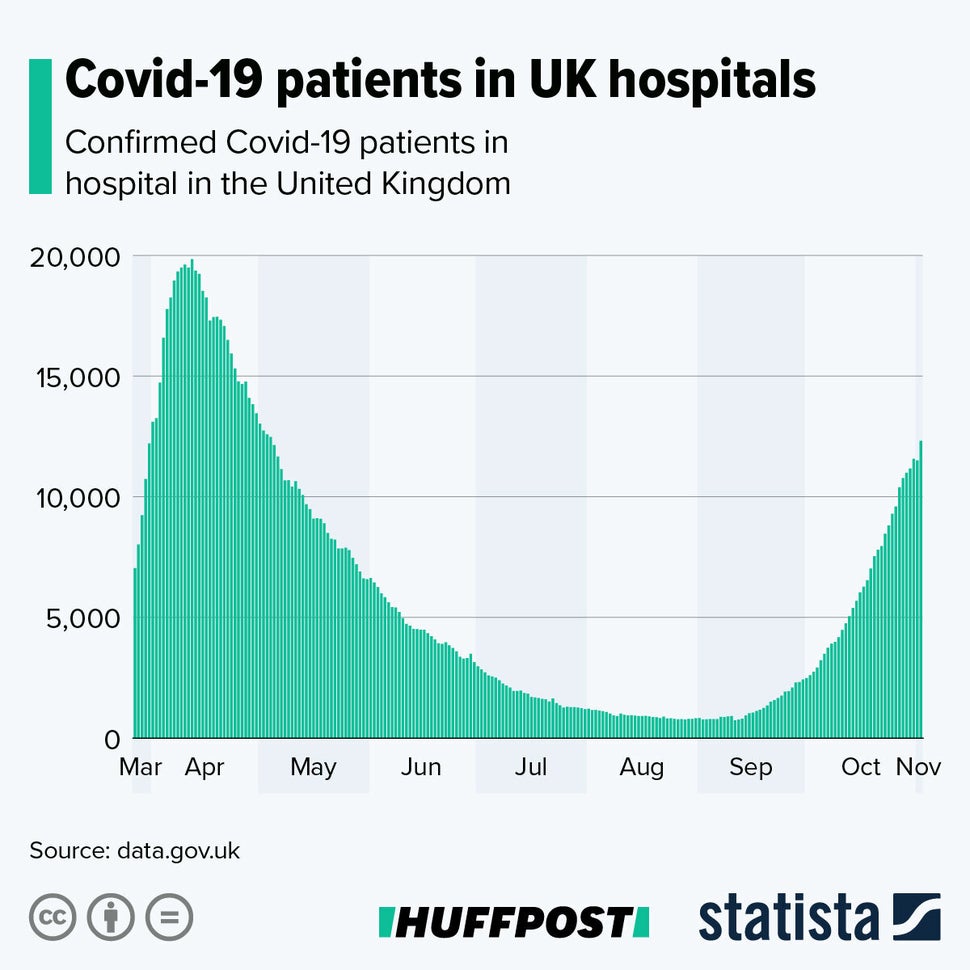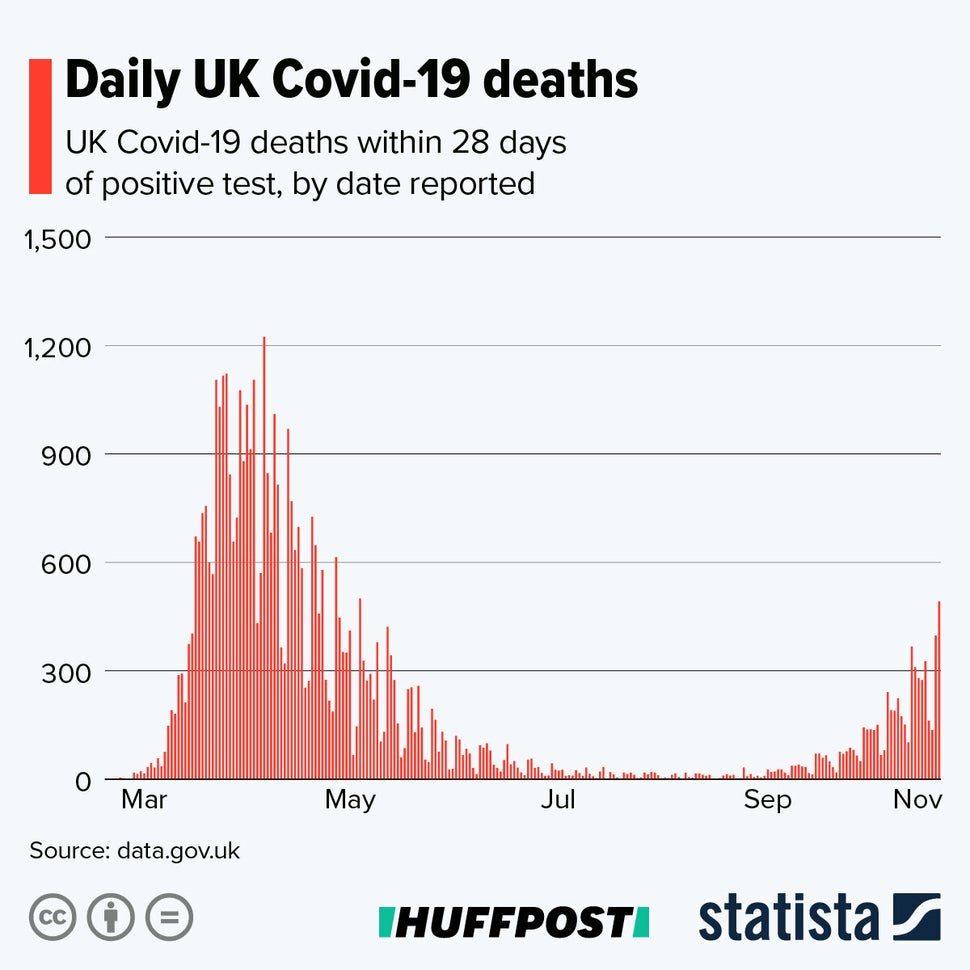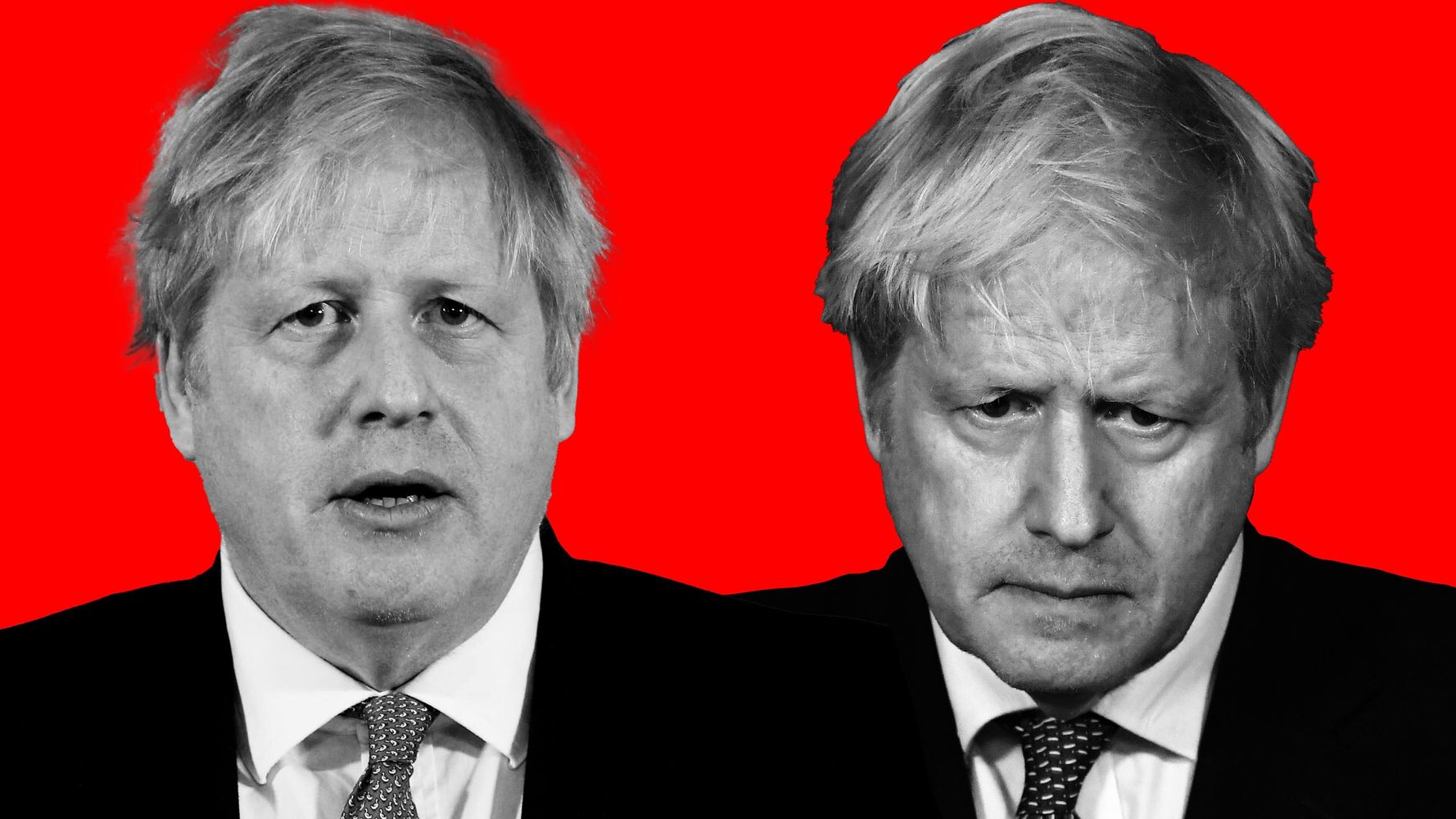When Boris Johnson took to our screens on Saturday to tell us that, for the second time this year, England was going into lockdown, the sense of déjà vu was crushing.
The tactics taken by the government to curb the spread of Covid-19 might be similar – but is the UK’s second wave of coronavirus any more under control than the first when it comes to case numbers or messaging from ministers? To put it another way: are we in an even slightly better position this time round?
Here’s what you need to know.
Lockdowns
March 23 is a date many of us will remember for a long time – the day the prime minister told us that the UK was going into lockdown, with an unprecedented set of restrictions placed on Brits’ freedoms.
“Stay at home,” the public were told, with all but non-essential travel banned and all but the most key shops and services closed.
The rules stated that everyone should work at home if they could and restricted exercise outdoors to once a day.
Mixing with anyone outside of your own household was banned, while people with conditions that could make them more vulnerable to coronavirus were told to “shield” at home.
The PM said that the restrictions would be reviewed after three weeks – but in reality, most stayed in place until July.
In some parts of England, local restrictions mean residents have had very little respite from lockdown since March.
Amid the second wave of infections, the government’s strategy has not been so straightforward.
Despite being told by its own board of scientific advisers in late September that a “circuit-breaker” lockdown was needed across the UK to curb the spread of the virus, Boris Johnson and his ministers pressed on with their three-tier system of rules:
Tier 1: Rule of six in place, bars and restaurants open to groups of different households, but 10pm curfew in place
Tier 2: Rule of six in place outside, but no household mixing inside, including in restaurants and bars. 10pm curfew in place.
Tier 3: No household mixing inside or outside. Pubs and bars must close unless they serve “substantial” meals.
However, even though millions and millions of people in England were under tier 2 and tier 3 restrictions, Covid-19 infections continued to rise.
It was only on October 31 that Johnson took the plunge and announced a second national lockdown for England, starting on November 5 and finishing December 2.
Michael Gove, who is part of Johnson’s cabinet, has already admitted that restriction could be extended past the start of December.
He told Sky News’ Sophy Ridge on Sunday: “With a virus this malignant, and with its capacity to move so quickly, it would be foolish to predict with absolute certainty what will happen in four weeks’ time, when over the course of the last two weeks its rate, its infectiousness and its malignancy have grown.”
Cases
According to official government data, the highest number of Covid-19 cases recorded on a single day during the first wave was 6,201.
However, the real peak in cases is likely to have been much, much higher, with the UK racing to increase its testing capacity in the early weeks and months of the pandemic.
In short – lots of people who had the virus were not tested.
In mid-April, when coronavirus deaths were at their highest, fewer than 30,000 tests were being processed each day.
It wasn’t until the middle of May that the government announced that anyone with coronavirus symptoms – not just key workers – could get a coronavirus test.
By the end of October, as many as 347,000 tests were being processed daily – a huge increase from the first wave.
Accordingly, the number of positive tests has also soared during the second surge in infections.
Since October 3, daily cases have not dipped below 12,500 and have exceed 20,000 on 15 separate days.
On October 21, 26,688 new cases were reported in the UK – the highest on record.
To date, more than one million people have tested positive for Covid-19 in the UK, the ninth-highest figure for any country in the world.
However, this ranking is likely to be skewed by countries that have invested less in expanding their testing capacity.
Test and Trace
Back in May, Boris Johnson promised that England would have a “world-beating” test, track and trace system that would “change people’s lives”.
Under the new system, people who tested positive for coronavirus would be called by a contact tracer, who would ask for details about everyone they had been in close contact with in the previous days.
These people would then be told to self-isolate for two weeks, eliminating their chance of accidentally passing on the virus.

The “world-beating” NHS Test and Trace system promised by Johnson has yet to appear.
In fact, the service hit a new low on Thursday after it reported its worst ever figures for tracking down the “close contacts” of people with Covid.
According to the latest statistics, in the week ending October 28, just 59.9% of cases in England were reached and told to self-isolate to stop the spread of the virus – down from 60.6% the week before.
It means that two-fifths of people who have been in contact with someone with Covid-19 have not been reached – and therefore not told to self-isolate for 14 days.
A total of 131,136 known people were not reached in that week, meaning they were potentially spreading the virus asymptomatically.
Since the service began, some 598,930 close contacts have not been reached, compared to 1.2m who have.
On Thursday, justice secretary Robert Buckland defended the service, saying the month-long lockdown would be used to “redouble our efforts” to expand the NHS Test and Trace programme.
Covid-19 patients in hospital

During the first wave of Covid-19, the number of people with the virus in hospital in the UK peaked at 19,849 on April 12.
On this day, there were 3,301 people on ventilators – the highest number recorded during the pandemic.
The earliest figure available is for March 27, when there were 7,043 Covid patients in hospital. It took seven days for that to more than double to 14,729.
Neither the number of people with Covid-19 in hospital, nor the number on ventilators, has reached the worrying highs recorded during the first surge of the pandemic.
On November 4, there were 12,999 coronavirus patients in UK hospitals and 1,191 of these were in mechanical ventilation beds.
What’s more, the first figure is not quite double what it was on October 18 and the latter is approximately double what it was on October 16. That means hospital occupation has doubled in about 17 days.
However, with a four-week lockdown looming in England amid spiralling Covid-19 infections, the numbers of patients in the country’s hospitals at the start of the first and second lockdowns make for an interesting comparison.
The government has not published data about how many people with coronavirus were in hospital in England when Johnson announced the first lockdown on March 23.
However, four days later on March 27, the country’s hospitals were occupied by 3,097 Covid-19 patients.
On October 31, when the PM made another address to the nation to tell them they would locking down for four weeks over November, there were already 9,213 people with the virus in hospital in England.
On Wednesday, Professor Stephen Powis – who is NHS England’s national medical director – warned that the north-west was “particularly under pressure”.
“That translates into the highest number of admissions [being] in the north-west,” he said.
“But […] infection rates are now rising and rising faster in the south, [and] hospital admissions are beginning to rise in the south of the country too.”
Deaths

In the immediate aftermath of the UK’s first lockdown being announced, coronavirus deaths rose rapidly.
On March 23, the day of lockdown, the deaths of 76 people suffering with Covid-19 were recorded.
Just 15 days later, the daily death toll had surged above the 1,000 mark.
Then, on April 21, the deaths of 1,224 people with coronavirus were recorded by the government – the highest on any day during the first wave of the virus.
But the daily death toll remained high throughout April, exceeding 1,000 on nine separate occasions.
If those figures seem higher than you remember, that’s because they are. Deaths in care homes and the community, recorded separately for most of April, were backdated and added to the daily totals at the end of that month. The public daily deaths announcements had only covered hospitals up to that point.
Deaths have yet to reach the tragic daily highs recorded in the spring – but fatalities are on the increase.
With deaths beginning to rise once more from the middle of September, daily fatalities once again began to breach the 100 mark in October.
On November 4, the daily death toll reached 492 – the highest number of deaths recorded since May.
What has changed, though, is the rate at which deaths have gone up. In the run-up to the first lockdown, daily recorded deaths passed 50 for the first time on March 21. Just 11 days later they breached 500, hitting 672.
It is now more than a month since they passed 50 during the second wave (71 recorded on September 29), and they have yet to hit 500, 38 days on.
Unfortunately, that might not mean much. Speaking to MPs on Tuesday, the prime minister warned that scientific models showed that coronavirus deaths over the winter could be “twice as bad or more” compared to the first wave unless the government took action.
To date, nearly 48,500 people have died within 28 days of testing positive from Covid-19 in the UK, meaning the country has the fifth-highest death toll in the world, behind the US, Brazil, India and Mexico.
As with hospital numbers, whether the slower growth in death count means the second wave is less severe than the first or simply taking longer to unleash can’t be known because the graph has yet to level out. It’s worth noting that these figures are in line with the R rate, which is now at 1,1 to 1.3 and has never gone above 1.6 during the second wave.
It was estimated to be above 2 during the first wave, which is consistent with a more rapid virus spread.
Public messaging
Remember how simple the crucial “stay at home” message from the government was during the first lockdown? It did what it said on the tin.
However, with changing rules came changing messaging – and far more confusion.
As the UK began opening up again, “stay alert and control the virus” became the government’s new key catchphrase – but many were left asking what that actually meant.
“Control the virus” is still a central pillar in public messaging – and has been joined by the ”hands, face, space” slogan.
But with the three tier system of coronavirus restrictions in place until Thursday, the various set of restrictions in different areas of the country left many confused – especially about travel restrictions between areas.
Another significant change between the first and second waves of the virus is the lack of daily press conferences from the government and its key scientific and medical advisers.
During the first lockdown in the spring, the public got used to hearing from the likes of Boris Johnson, the chancellor Rishi Sunak, health secretary Matt Hancock, as well as chief medical officer Chris Whitty and his scientific counterpart Patrick Vallance.
But while there have been impromptu press conferences from Downing Street in recent months, there has been little discussion about whether these daily briefings could return over November.
Infographics by Statista
Calling all HuffPost superfans!
Sign up for membership to become a founding member and help shape HuffPost’s next chapter


